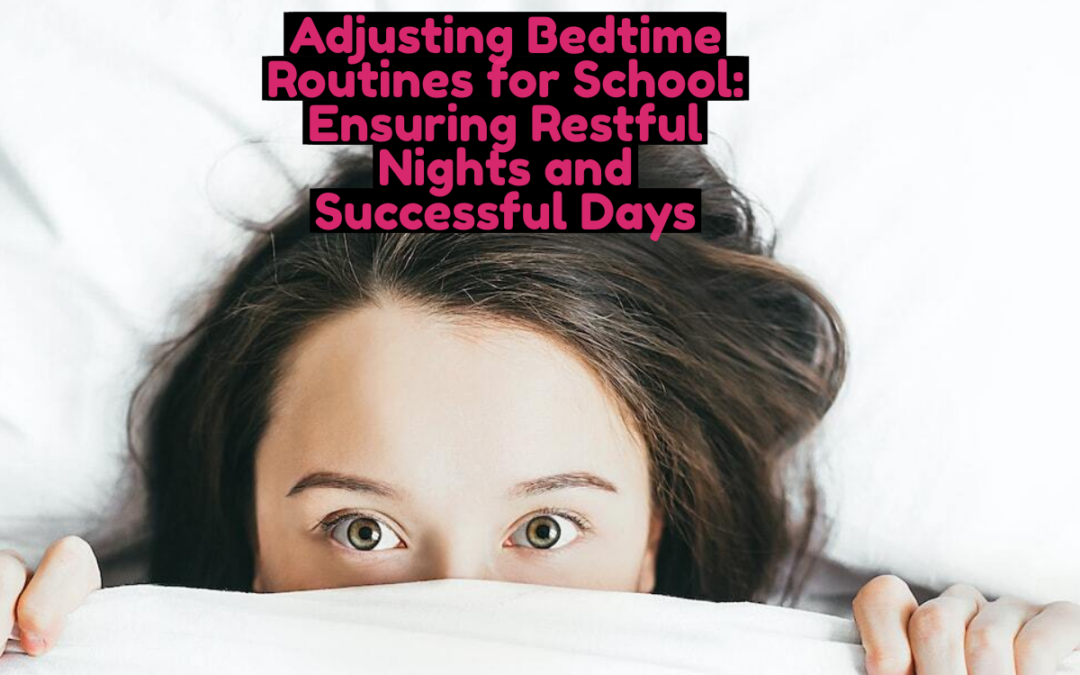This post may contain affiliate sales links.
The transition from summer vacation to the school year can be challenging, especially when it comes to adjusting sleep schedules. Establishing a consistent bedtime routine is essential for ensuring children and adolescents get the rest they need to thrive academically and emotionally. In this blog post, we will explore effective strategies and tips to help parents and guardians seamlessly transition their children into healthy sleep habits for school.
Gradual Adjustments: Rather than abruptly changing bedtime schedules, it is advisable to make gradual adjustments in the weeks leading up to the start of school. Begin by shifting bedtime 15-30 minutes earlier each night, allowing your child’s body to adapt slowly. This approach will minimize resistance and help their internal clock align with the upcoming school schedule. Additionally, adjust wake-up times accordingly to maintain a consistent sleep duration.
Consistent Bedtime Routine: Creating a predictable bedtime routine is key to signal to your child’s body that it’s time to wind down and prepare for sleep. Start by establishing a specific time for the routine, ensuring it allows for an adequate amount of sleep. The routine should include calming activities such as reading, taking a warm bath, or engaging in quiet play. Dimming lights and reducing screen time at least an hour before bedtime can help promote the release of melatonin, the hormone responsible for regulating sleep. Encourage your child to choose soothing activities that promote relaxation and avoid stimulating ones that may hinder sleep.
Optimal Sleep Environment: A sleep-friendly environment is essential for quality rest. Create a comfortable, cool, and dark bedroom to facilitate a restful night’s sleep. Consider investing in blackout curtains, a supportive mattress, and cozy bedding. Minimize noise distractions and use a white noise machine if necessary. Limit electronic devices in the bedroom and encourage your child to charge them outside the sleeping area to avoid temptation. Ensure that the bedroom is tidy and free of clutter, creating a calm and inviting space conducive to relaxation.
Consistency and Communication: Consistency is key when it comes to maintaining healthy sleep routines. Encourage open communication with your child, explaining the importance of quality sleep for their well-being and academic success. Involve them in the process, allowing them to provide input and discuss any concerns they may have. By fostering an open dialogue and jointly establishing bedtime rules, you can empower your child to take ownership of their sleep habits, creating a sense of responsibility and accountability.
Adjusting bedtime routines for school requires planning, patience, and persistence. By gradually transitioning sleep schedules, establishing consistent routines, optimizing sleep environments, and fostering open communication, parents can set their children up for restful nights and successful days. Prioritizing healthy sleep habits not only supports academic performance but also contributes to overall well-being, enabling children to approach each day with energy, focus, and enthusiasm. Remember, the key is to provide a nurturing environment that values and prioritizes restful sleep.

